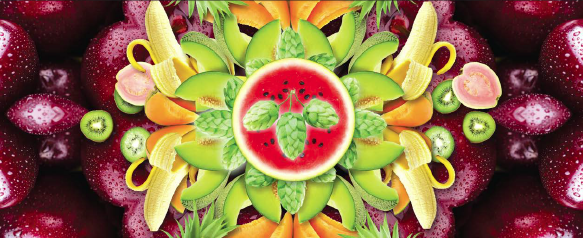Celebrating Hop Flavors: The sweet fruits of our labor
Many of the hop varieties discovered in the last few decades deliver fruity nuances. What’s interesting is that, to the untrained nose, sweet fruit hop aromas would not immediately be recognized as “fruity.”

Welcome back to our newest blog series, Celebrating Hop Flavors. Here at John I. Haas, our team of sensory experts takes time to explore some of the important, interesting, and often unsung aspects of the hops’ flavor spectrum that are inspiring innovative brewers around the world to create some of the most exciting beers you can imagine.
In this edition of Celebrating Hop Flavors, we showcase the sweet fruit flavors of hops. Sweet fruit flavors are without a doubt a mainstay of the craft beer industry. They are found abundantly in Pale Ales, IPAs, Session IPAs, Imperial IPA’s, as well as with many other popular beer styles. This family of flavors includes pineapple, passion fruit, papaya, mango, peach, melons, coconut, bananas, lychee—the list goes on and on.
Many of the hop varieties that have been discovered in the last few decades deliver these fruity nuances. What’s interesting is that, to the untrained nose, sweet fruit hop aromas would not immediately be recognized as “fruity”. In fact, out of the hop field, hops often give off the pungent, unwelcoming aromas of onion, sulfur, rubber and even cat pee. It is only until the brewing process, that many hops meld and transform into beautiful ripe fruit flavors.
Craft brewers have learned to harness the personality of these big, bold hops and have translated them into some of the world’s most successful beer brands and styles. Most of these popular hop varieties are grown in the USA and Australia, but new cultivars are popping up all around the globe. Some of the most notable varieties include:
• Aloha (composition blend)
• Citra®
• Mosaic®
• Ekuanot™
• Sabro™
• El Dorado®
• Galaxy™
• Nelson Sauvin
• BRU-1™
• Yellow Sub (composition blend)
From a chemistry perspective, the origins of sweet fruit flavor in hops is elusive, although brewing scientists are working diligently to uncover its secret. Looking at major hop oil components, there are only a few suspects in the line-up. Linalool makes up 0–3% of hop oil and is very commonly described as smelling like Kellogg’s® Froot Loops™ cereal. (Personally, I’m convinced linalool is the cereal’s main flavor ingredient—perhaps we can get our friends at Kellogg’s to weigh in on this!) Two cousin compounds, geraniol and geraniol acetate, are found in similar amounts and also deliver fruit and floral characteristics. And that’s the entirety of sweet fruit chemical compounds in plain sight. How can these few compounds explain all of the different fruit flavors of hops? The simple answer is, they can’t!
Recent work has revealed that hops are rich in sulfur compounds. Many of these compounds are well known in the wine industry, including 3-MH, 3-MHA and 4-MMP. They smell like passion fruit, guava, black currant and (unsurprisingly) white wine. Some chemists theorize that these highly potent compounds are the key to the sweet fruit hop flavor in beer as well.
Science and art hit the road when brewers dry hop beer. Craft brewers have developed dozens, if not hundreds, of dry hopping techniques to achieve the flavor outcomes they want. Recently, New England IPA’s have taken the craft scene by storm following the path of trailblazers like West Coast and Northwest IPAs. The New England IPAs favor warm dry hopping during fermentation, which produces beers with hugely juicy hop flavors, and perfectly showcase the sweet fruit flavor of hops.
To learn more about the subtle and surprising flavors of hops—and to better understand the types of flavor profiles you can achieve—reach out to your John I. Haas sales representative. Or drop us a line here at the Haas Innovations Brewery anytime. We always love to hear from you.
Cheers!
